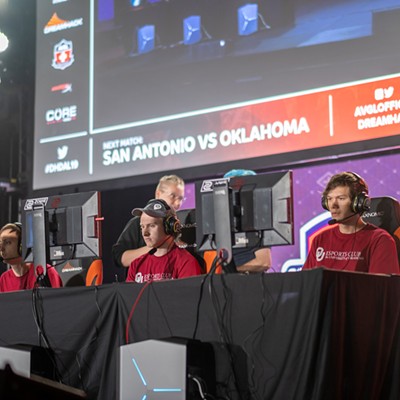
“Today, we think of billboards as this rectangle thing on a pole,” said Kathy Anderson of the the Bethany Improvement Foundation.
But in the heyday of Route 66, billboards were often lower to the ground, displayed hand-painted art or art deco design and sometimes even were three-dimensional structures with people inside demonstrating products, she said.
“They were designed for a slower lifestyle,” Anderson said. “It was a very different feel to things.”
The museum will tell the evolution of the structures, neon and porcelain signs and the artists who designed and painted them.
Blast to the past
Foundation members see the future museum as a possible anchor to foster development in Bethany. Organizers want the museum to be a destination complex with companion businesses such as a movie theater or diner, said Arlita Harris, foundation secretary-treasurer.
Foundation members want the museum and development around it to be a way to encourage people, such as Route 66 tourists, to come to Bethany.
Right now, the museum plans aren’t even plans, Anderson and Harris said. Factually, they have loose proposals floated to garner broader feedback and interest from Bethany landowners and residents. They haven’t yet found an address, an artist rendering or an estimated date to start construction, they said.
Harris does know one thing, though. If they build it, people will come. “There also needs to be a reason for people to stop (here),” Harris said. “It ties into our interest in increasing tourism. No one seems to be preserving that era.”
The group has a few locations in mind and is actively seeking funding, Harris said.
In addition, organizers want the museum to offer classes such as billboard design and painting on a smaller scale and demonstrations of neon sign glass bending.
“We’re at the dream stage, but it’s a billboard museum; it’s got to be big,” Anderson said.
Many people have nostalgia about Route 66, and things like classic cars can help people get in that mindset.
“What you can’t find is the old advertising. That’s gone,” Anderson said.
“Now it’s pretty much vinyl or you have digital. The whole billboard industry is changing. You’re not going to find a hand-painted billboard, or it’s very rare.”
The group will soon begin to gather some of the stories of those artists who are still alive with the assistance of local outdoor advertising companies and the Outdoor Advertising Association of America.
“Wouldn’t it be great to get their stories? Really, they were artists and craftsmen,” Anderson said.

In addition, the group is searching for old billboards with mechanic or moving parts or billboard designs. There aren’t many billboards left, but there are many photographs. The outdoor advertising association has offered the use of its archives, which includes graphs, as photo- well.
Signs of the times
Billboards showed anything from automobiles of the 1940s and tourist destinations of the 1950s to fashion changes, Anderson said. They contributed to American cul- ture by advertising what would become national brands.
“When you think about it, billboards came into being as this country started finding its identity,” Anderson said.
Mike Loyd, group member and neon sign collector, said signs of the era have become popular.
Loyd has a collection of signs spanning from the 1930s to the early 1960s. Many of the neon signs from the Route 66 era and those in Loyd’s collection focused on car dealerships and automotive themes. Some have blinking lights that give the appearance of movement.
Loyd said a museum would help capture some of the nostalgia of Route 66 while helping Bethany become a destination.
“The signage is what brings back a lot of memories to me,” Loyd said. “I think there are a lot of people my age, baby boomers, who have these great memories of traveling.”











